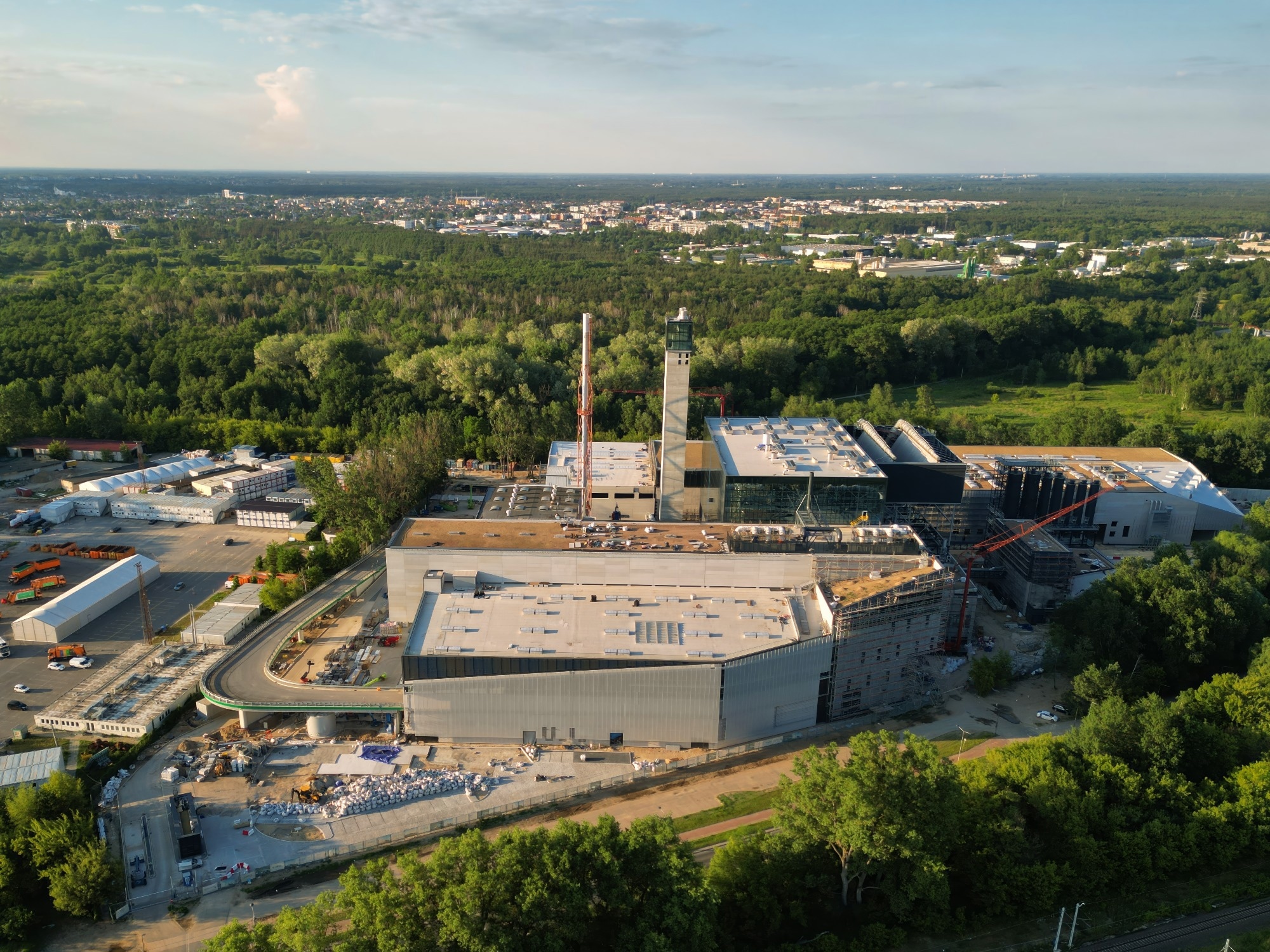A recent study published in Scientific Reports comprehensively explored the presence, quantity, and morphology of microplastics in ash residues from municipal solid waste (MSW) incinerators in Tehran and Nowshahr, Iran. The goal was to highlight the limitations of incineration, a common method for treating waste. The findings showed that despite high-temperature combustion, microplastics persist in the residues, posing challenges to sustainable waste management and environmental health.

Image Credit: Below the Sky/Shutterstock.com
The Role of Incineration in Modern Waste Management
Effective municipal solid waste management is essential for sustainable urban living. As cities continue to grow rapidly, waste generation has surged—placing significant pressure on waste management systems, especially in developing countries.
Incineration and landfilling are the dominant waste treatment methods, each with distinct environmental impacts. While incineration reduces waste volume and recovers energy by burning waste at high temperatures (approximately above 850 °C), it produces leftover ash that can contain harmful substances, such as heavy metals and microplastics. If not handled properly, these pollutants can enter the environment. The effects of incineration on pollution, especially microplastics, are still not fully understood in developing countries.
Investigating Microplastic Residues in Incinerator Ashes
In this study, researchers focused on two active dual-chamber MSW incinerators in Iran: one in Tehran, serving around nine million residents, and another in Nowshahr-Chalus districts with populations of approximately 100,752 and 131,317.
Both incinerators operate at combustion temperatures ranging from 850-1050 °C in the first chamber to 950-1200 °C in the second, processing 200 tons (Tehran) and 179 tons (Nowshahr) of waste daily.
Ash samples were collected monthly over one year (March 2021-2022) from three locations in each incinerator: first chamber bottom ash (FBA), second chamber bottom ash (SBA), and fly ash (FA) from baghouse filters.
These samples were dried at 65 °C, sieved using a 1 mm mesh to separate particles by size, and then subjected to flotation using sodium chloride solution (density 1.2 g/mL) to isolate low-density microplastics. The supernatant was filtered through 5 μm cellulose filters, repeating the process three times to ensure purity.
Microplastics smaller than 1 mm were characterized by optical microscopy, while larger particles were analyzed with stereomicroscopy. Raman micro-spectroscopy identified polymer types, and scanning electron microscopy (SEM) coupled with energy dispersive X-ray spectroscopy (EDS) characterized surface morphology and elemental composition.
Findings on Microplastic Abundance and Characteristics
The study detected 3,491 microplastic particles across all ash samples, highlighting spatial and temporal variations between incinerators.
Tehran’s incinerator ash consistently contained 14-16% more microplastics than Nowshahr’s across all ash types. Per 100 grams of ash, microplastic counts ranged from 108 to 192 particles.
Distribution by ash type showed 40% of microplastics in FBA, 31.8% in SBA, and 27.2% in FA. Seasonally, the highest abundance occurred in Tehran's summer and Nowshahr's spring.
Raman spectroscopy identified six polymer types: polyvinyl chloride (PVC, 35.5%), polypropylene (PP, 21.7%), polystyrene (PS, 16.5%), low-density polyethylene (LDPE, 10.9%), high-density polyethylene (HDPE, 8.2%), and polyethylene terephthalate (PET, 7.4%). Size analysis identified that 65.3% of microplastics were under 10 micrometers, 21.2% between 10 and 100 micrometers, and 13.6% above 100 micrometers.
Morphologically, fibers dominated (65.3%), followed by films (31.6%) and irregular shapes (12.4%). Color analysis showed that blue (40.7%), red (32.8%), and transparent (14.7%) particles were the most common.
SEM/EDS analysis detected metals such as iron, manganese, and calcium adhered to microplastic surfaces, indicating these particles may act as carriers of toxic pollutants. The presence of microplastics in ash results from incomplete combustion of macroplastics and direct input of primary microplastics from waste streams.
Researchers emphasized that the quantity of microplastics is influenced by the incoming waste composition. In Iran, plastics comprise about 8.4% of municipal solid waste by weight, but only 12% of plastic waste is recycled, leading to significant plastic input into incinerators.
Implications for Environmental Policy and Waste Management
This research underscores critical challenges in waste incineration, particularly in countries with low plastic recycling rates. Despite the high temperatures involved, microplastics remain in ash residues, showing that incineration alone does not fully eliminate plastic pollution. The detection of microplastics in fly ash raises concerns about their potential release into the environment.
The findings point to the urgent need for better source separation to reduce plastic content in municipal solid waste before incineration, which would help minimize the formation of microplastics. Proper handling and safe disposal of incinerator ash—often containing microplastics and heavy metals—are also essential to prevent environmental contamination.
Enhancing public awareness around plastic reduction and investing in stronger recycling infrastructure are also key steps toward mitigating the broader issue of microplastic pollution.
Conclusion and Future Directions
Municipal solid waste (MSW) incinerators in Tehran and Nowshahr have been found to produce ash containing notable amounts of microplastics—mainly in fiber form and typically smaller than 10 micrometers in diameter. Despite the high combustion temperatures involved, these microplastics persist and pose environmental and health risks due to their ability to adsorb heavy metals and toxic substances.
Future research should aim to better understand how microplastics form during incineration, evaluate their presence in exhaust gas emissions, and develop effective treatment methods for ash residues.
Reducing microplastic pollution will require a multi-pronged approach: improving waste sorting at the source, boosting plastic recycling rates, and innovating incinerator design and ash management processes.
This study highlights a significant gap in current waste-to-energy technologies. It underscores the need for integrated solutions that combine technological innovation, policy measures, and public engagement to safeguard environmental health and ensure sustainable waste management.
Disclaimer: The views expressed here are those of the author expressed in their private capacity and do not necessarily represent the views of AZoM.com Limited T/A AZoNetwork the owner and operator of this website. This disclaimer forms part of the Terms and conditions of use of this website.
Source:
Valizadeh, B. et al. (2025). Quantity and morphology of microplastics in the Tehran and Nowshahr MSW incinerators ashes. Sci Rep 15, 28973. DOI: 10.1038/s41598-025-93155-6, https://www.nature.com/articles/s41598-025-93155-6